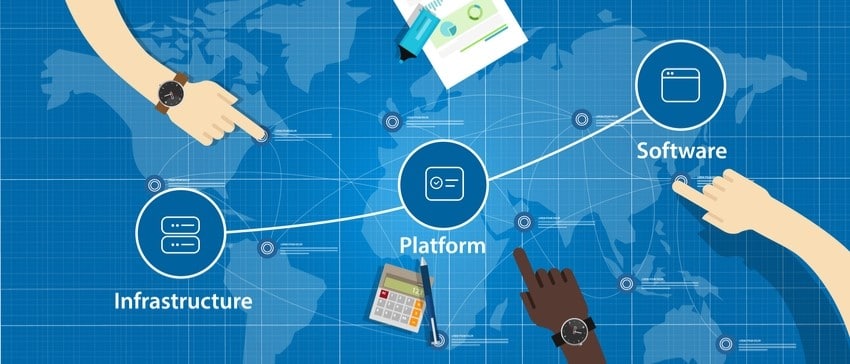The contract procurement process refers to a series of steps and procedures undertaken by a business or an organization when purchasing products and services. Procurement is a crucial function as it helps organizations acquire the resources (products, goods, services, etc.) they need to operate fluidly.
The contract procurement process starts when the manager identifies a business need to be fulfilled or satisfied and ends when the contract is signed. Responsible management of public funds and organizational resources can be achieved when services and products are procured effectively.
But why precisely is contract procurement considered a critical aspect in the survival and sustainability of any organization or business? Well, let’s take a look:
Importance of Contract Procurement
Your business can manage supplier relationships better with a strategic and structured procurement process in place. Better supplier relationships lead to more value and a higher quality of service. With a contract procurement process in place, you’ll have a streamlined model of ordering, receiving goods, assessing invoices, and paying for items and services.
Ideally, you’ll be able to use the same set of processes when purchasing products and services for your business. This will, in turn, enable you to resolve issues quickly when they occur. The goals of a successful procurement management process include:
- Identification of appropriate products and services
- Creation and issuance of purchase orders
- Ensuring timely delivery
- Approving payments
- Establishing and meeting milestones in supplier contracts
- Resolving issues with product delivery
- Communicating issues with the management team
- Reviewing contract fulfilments
Designing the contract procurement process is the next phase after identifying the significance of a procurement process. Usually, several steps are captured in an effective procurement process.
Identifying Requirements for Services and Goods
The procurement cycle kick-starts when a business unit inside an organization identifies a specific need that needs to be fulfilled. So, the products or services needed to satisfy this need are outsourced from an external vendor. For instance, the marketing department may require banners, stationery, and computers to kick-start a new marketing campaign. So, the contract procurement process starts by consolidating the requirements needed to fulfill the needs of an organization.
Identification and Evaluation of Suppliers
Once the business units identify their product or service requirements, they design a list of potential vendors who may supply the products. The process of supplier selection involves a simple web search or using RFIs, RFQs, and RFPs.
The objective of the supplier selection is to identify suitable suppliers. The evaluation metrics for relevant suppliers and vendors may capture pricing, industrial reputation, quality of service, warranty, guarantees, and recognitions. The supplier selection process is over when the supplier who offers the best price and maximum value earns the contract.
Negotiating the Contract Terms
The contract process officially begins after selecting a relevant supplier to satisfy the needs of an organization. Contracting is a crucial aspect of the procurement process for stimulating buyer-vendor collaborations and maximum value creation. This contract procurement step involves evaluating critical factors like the terms and conditions, the scope of work, pricing structure, and delivery timelines. Detailed negotiation and analysis of contracts provide opportunities for dynamic cost savings and discounts.
Releasing the Purchase Requisition and Purchase Order
Once the organization finalizes its negotiations with the supplier and settles the scores, the next step is to create a purchase requisition. A purchase requisition captures the description of goods, services, supplier information, quality, quantity, pricing, approval workflow, and supplier information. Once the purchase requisition is received and approved, the finance department releases the purchase order to the vendor (or supplier), documenting information like payment terms, PO numbers, supplier information, and payment terms.
Invoicing and Payment
The supplier sends an invoice documenting the price of requested goods and services. Once the organization receives the products or services and matches them to ascertain quality and quantity, payment is released pre or post-delivery. Depending on the contract terms, payment can be delivered before or after services are rendered.
Auditing Delivery
The supplier delivers goods and services depending on the contract terms. However, on receipt, companies must audit products and services to ensure that the supplier has met relevant benchmarks like quality expectations.
Maintaining Invoices
As a best practice, it’s crucial to record all invoices to track spending and assess expenditure categories in an organization. Maintaining invoices also helps with future audit trails.
Contract Procurement Process in a Public Set-up
Public procurement may have additional steps and may usually comprise contract management or contract administration. In private organizations, contract procurement ends when the contract is awarded and the invoice is settled. However, contract administration or contract management is an entirely different phase. Despite this distinction, contract administration (or management) is just as crucial as procurement as it strongly influences and impacts supplier relationships.
Steps involved in public procurement include:
- Identification of product and service requirements
- Selecting a method of procurement
- Doing strategic planning
- Assessing and processing requisitions
- Publicizing solicitation papers and documentation
- Visiting relevant sites
- Conducting pre-bid proposal meetings
- Processing and assessing bids
- Award recommendations
- Negotiating contracts
- Awarding and signing contracts
ProcurePort – Your Strategic Procuring Partner
Procurement is evolving to be a strategic function as opposed to its past tactical function. Today, more than ever, organizations are streamlining their procurement functions to achieve cost savings through dynamic discounting.
ProcurePort’s spend management platform helps businesses and organizations of all sizes and sophistication to design effective and well-structured procurement processes. While organizations have diverse procurement needs and priorities, the steps highlighted above can be customized to any organization’s specific needs and requirements.
Contact or visit ProcurePort for timely solutions in contract procurement processes.










